
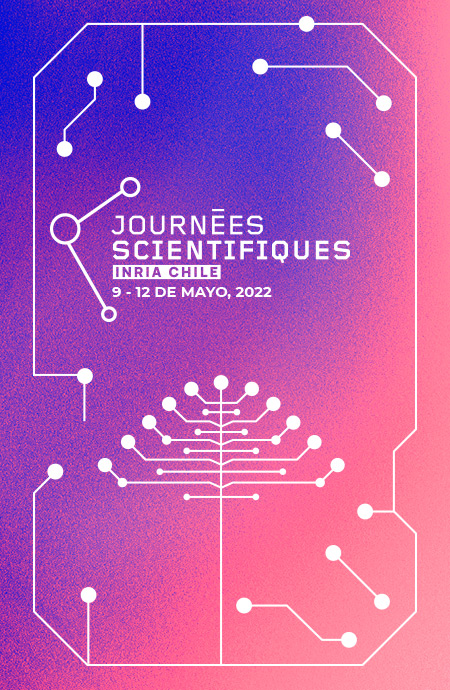
One of the main goals of the Journées Scientifiques Inria Chile 2022 was to
analyze and learn about the advances in science and technology, especially in areas such
as Artificial Intelligence, Internet of Things and Applied Mathematics. All these disciplines
can be focused and used in various areas with the aim of solving social, health or
environmental problems. Precisely, many of the initiatives that Inria develops at an
international level have recently been focused on environmental issues.
The environment, and the urgency of climate change were mentioned every day
of the Journées Scientifiques; so in this context different teams showed innovative ideas
and efforts that are being made to be part of the solution to this problem.
Thus, on day 1, in the session "New computational paradigms", GreenAI+SusAIn
was presented. The project, which brings together more than 30 scientists from Chile,
France, Uruguay and Paraguay, seeks to reduce energy consumption in Artificial
Intelligence algorithms, in the context of high-performance computing. It seeks to make,
and experiment, towards a more “green” Artificial Intelligence.
This group combines unique scientific expertise on this critical environmental
issue with the intention of leveraging existing hardware and software infrastructures, to
provide new tools and recommendations for the scientific community on designing and
properly implement Artificial Intelligence algorithms. Romain Rouvoy, full professor at the
Université de Lille and member of the SPIRALS Team of Inria, was the one who presented this project.
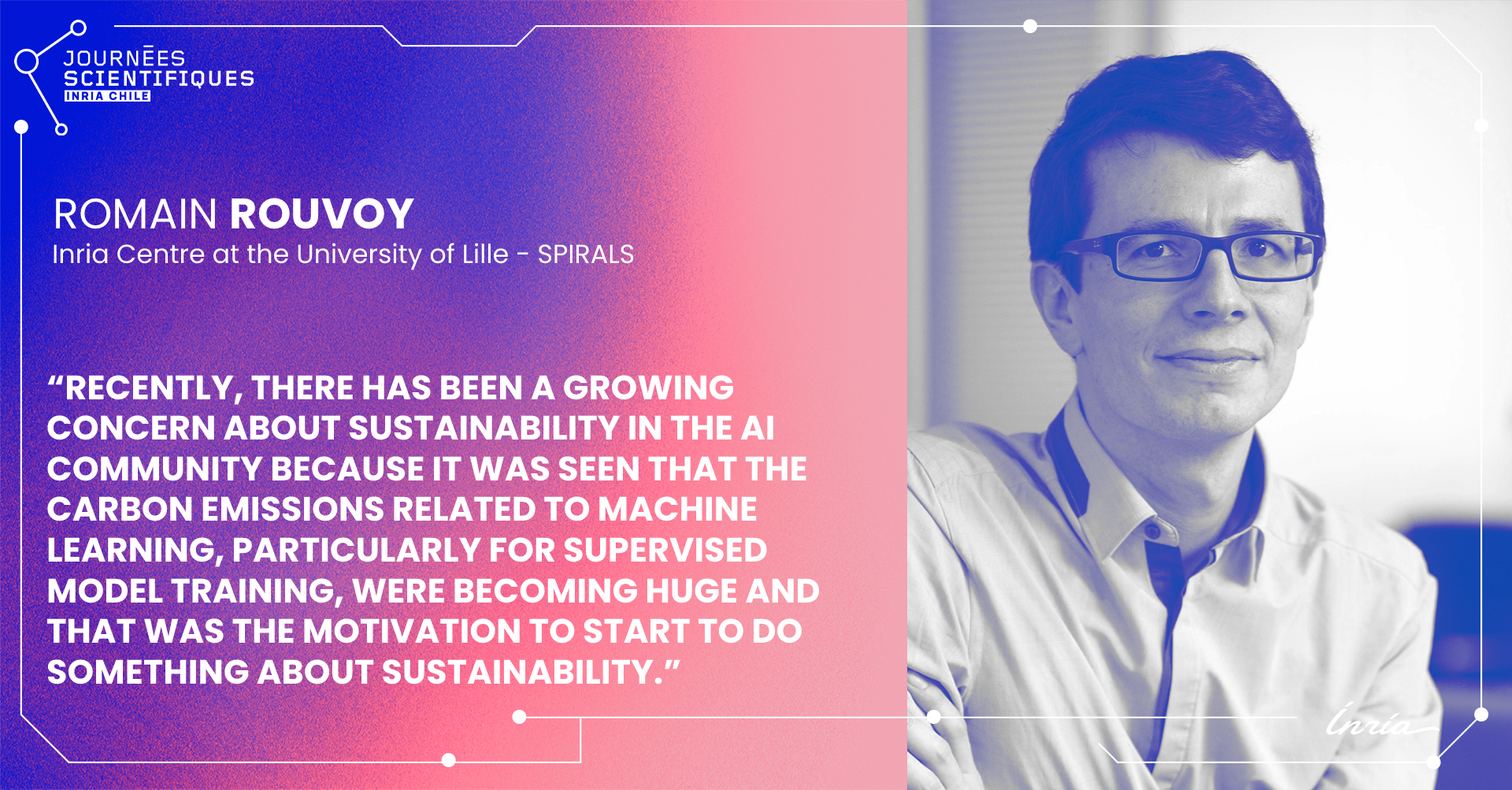

On Tuesday, activities started with the keynote "Mechanistic and data-based
models to understand the environment", given by Jacques Sainte-Marie, senior
researcher of the ANGE team and deputy director of research at Inria in charge of the
environment.
Sainte-Marie gave a contrasting overview of geophysical flow modeling and
simulations, showing what can be done with them and the coupling between mechanistic
models and data-driven approaches.
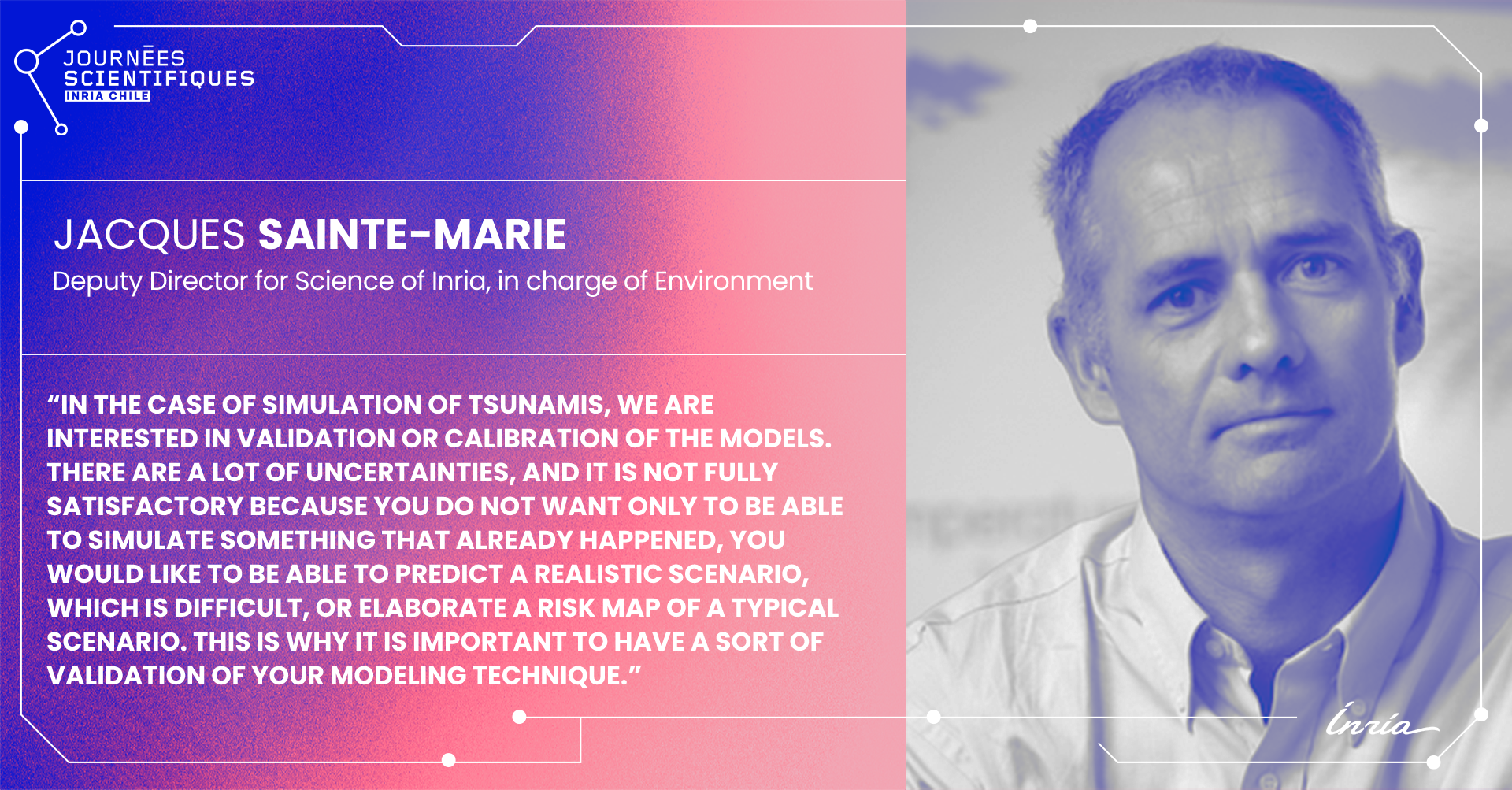

Then, at the session "Understanding weather and climate", Olivier Bernard,
leader of the BIOCORE Team of the Inria Center of the Université Côte d'Azur, presented
the work of the BlueEdge Associated Team (Artificial Intelligence and optimization for
cleaner biotechnological processes). This project, which works within the framework of
innovative processes through the use of microalgae in wastewater and aquaculture
systems, has the objective of recycling nitrogen, carbon and phosphorus, to reduce the
flow of pollutants in the natural environment.
At BlueEdge, experimental pilot systems and models for processes are being
developed, and Inria Chile participates in this project by designing advanced Artificial
Intelligence algorithms for data-driven supervision, which can also be implemented thanks
to the ODIN+ software.
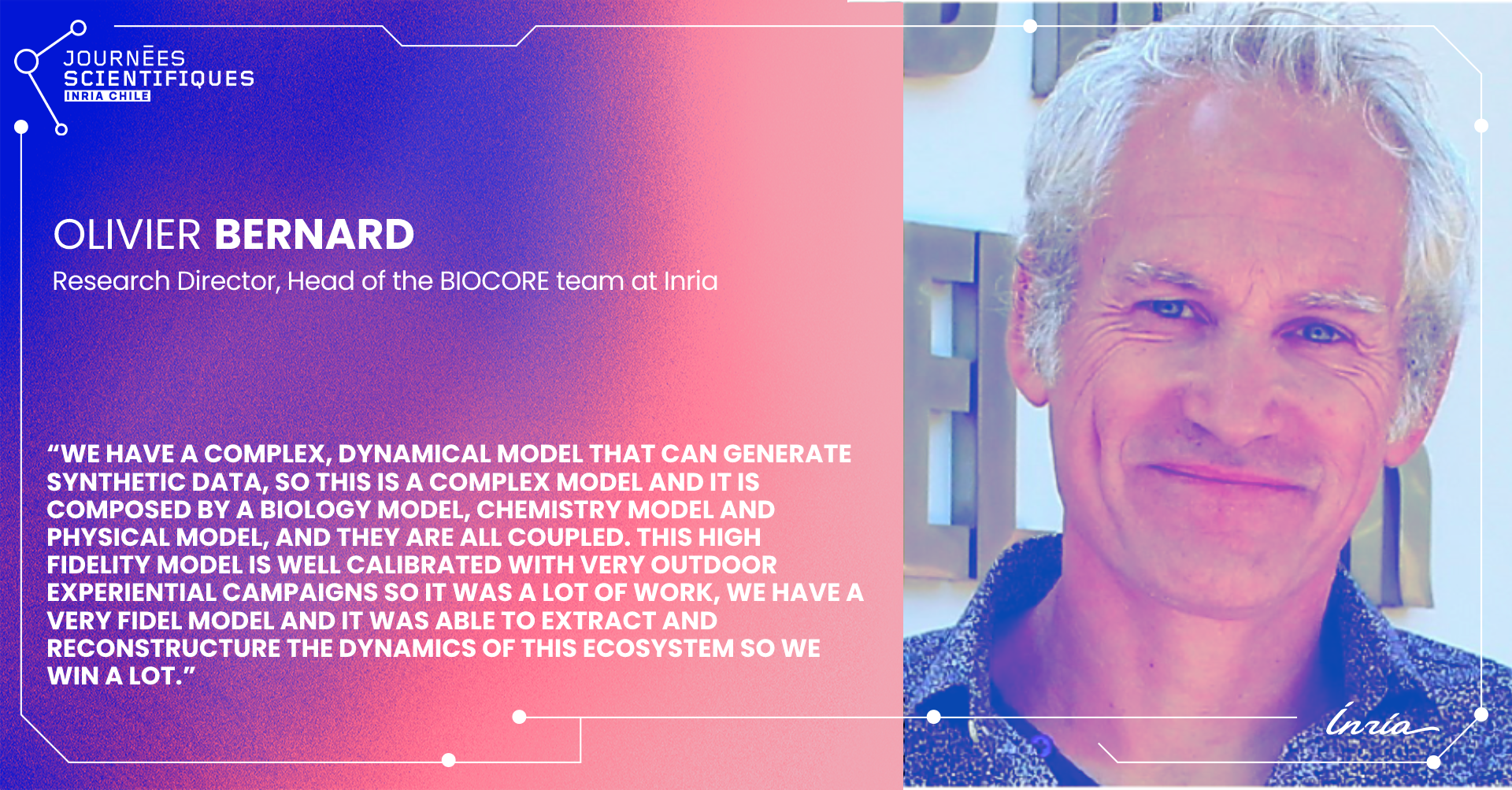

In the same session, E-Mistral was presented: an environmental surveillance and
inspection sailboat via transfer, reinforcement and autonomous learning. This project is
carried out by the consortium of which they are part: Inria Chile, the SCOOL team of the
Inria center of the University of Lille, the AIO team (ex-EVA), of the Inria center of Paris,
the Brazilian universities Universidade Federal Fluminense and Universidade Federal do
Rio Grande do Norte and the University of the Republic (Uruguay).
The speaker was Thomas Watteyne, Director of Research and Leader of the AIO
Team, who discussed autonomous sailboats and the challenge of Artificial Intelligence in
getting them to work properly.
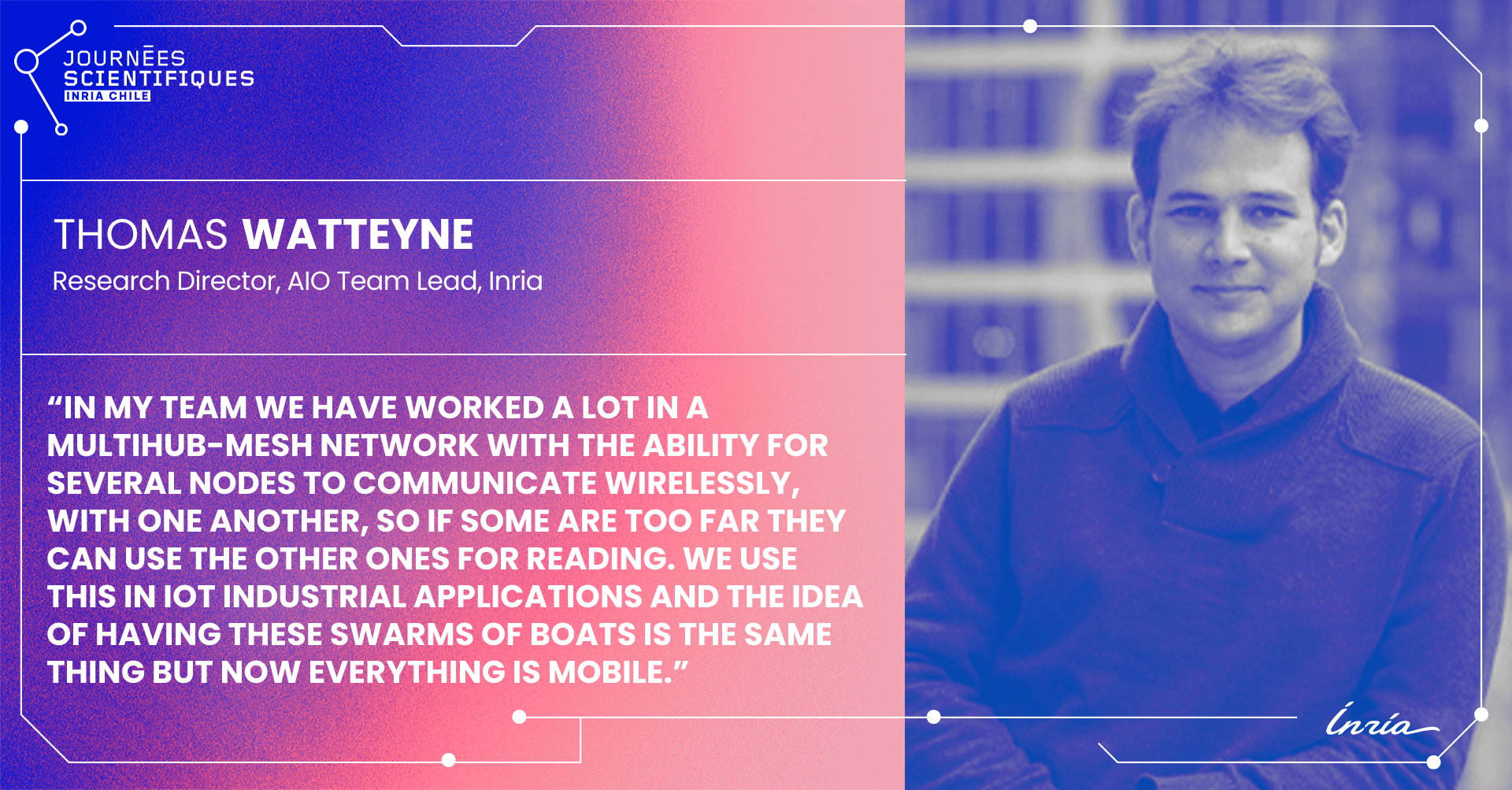

The last presentation of this session was made by Gerardo Rubino, senior researcher emeritus at Inria, who presented climateDL: Use of graphic spatio-temporal deep learning models for the seasonal forecast of extreme temperature events. This research is carried out by the consortium made up of the DIONYSOS team from the Inria Center of the University of Rennes, the Adolfo Ibáñez University, the University of Buenos Aires (Argentina) and the University of the Republic (Uruguay).
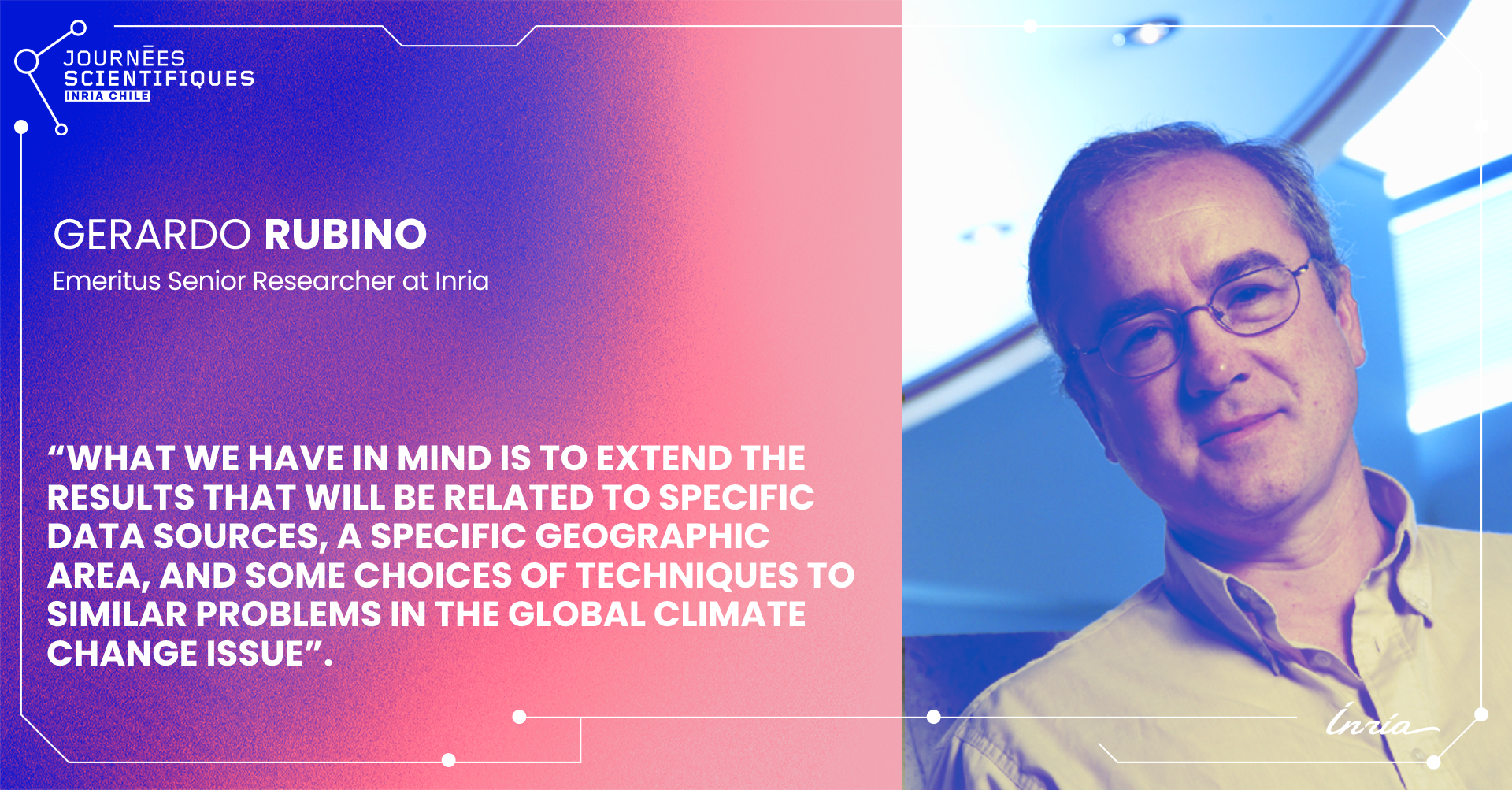

Day 3 began with the keynote "Digital and nature-based solutions", by Pablo Marquet, professor at the Department of Ecology, Pontificia Universidad Católica de Chile, associate researcher at the Center for Mathematical Modeling and the Institute of Ecology and Biodiversity. He referred to the benefits that nature provides to understand certain processes and phenomena, and gave the "Tara Ocean" expedition as an example.


Wednesday’s first scientific session was dedicated to one of Inria's iconic
projects: "Challenge OceanIA: Artificial Intelligence and Modeling to Understand the
Ocean and Climate Change", an initiative that seeks to develop new AI and Mathematical
Modeling tools to contribute to the understanding of the structure, functioning,
underlying mechanisms and dynamics of the oceans and their role in the regulation and
maintenance of the biosphere, as well as in the fight against climate change.
The speaker at this presentation was Luis Martí, Scientific Director of Inria Chile,
who stressed that the oceans and climate change "are closely related."


Later, that same day, the Session "Modeling Nature and Society" took place,
when the SymBioDiversity project was presented: Symbolic and numerical mining and
exploration of functional biodiversity, in which the DYLISS and PLEIADE teams from Inria,
researchers from the Center for Mathematical Modeling, collaborate (CMM) of the
University of Chile, who are in charge of modeling ecosystems, and Inria Chile,
contributing to the line of data mining applied to biodiversity.
This project was presented by Clémence Frioux, a researcher from the PLEIADE
team at the Inria Center of the Université de Bordeaux, who explained how the
mathematical models they are developing must be able to "reflect the reality of biological
systems", allowing a simpler approach to understandable, but informative enough to
allow the formulation of hypotheses.

